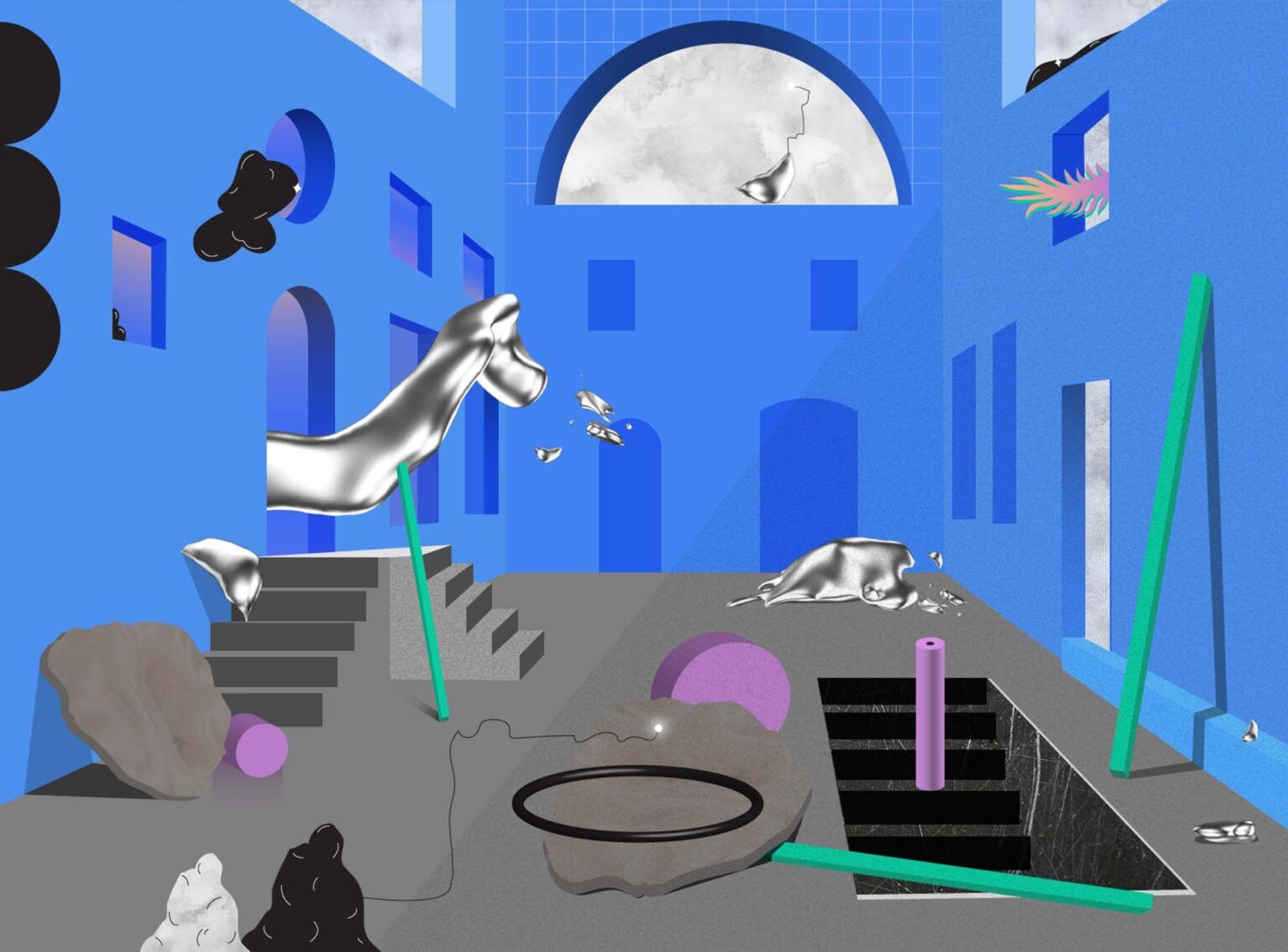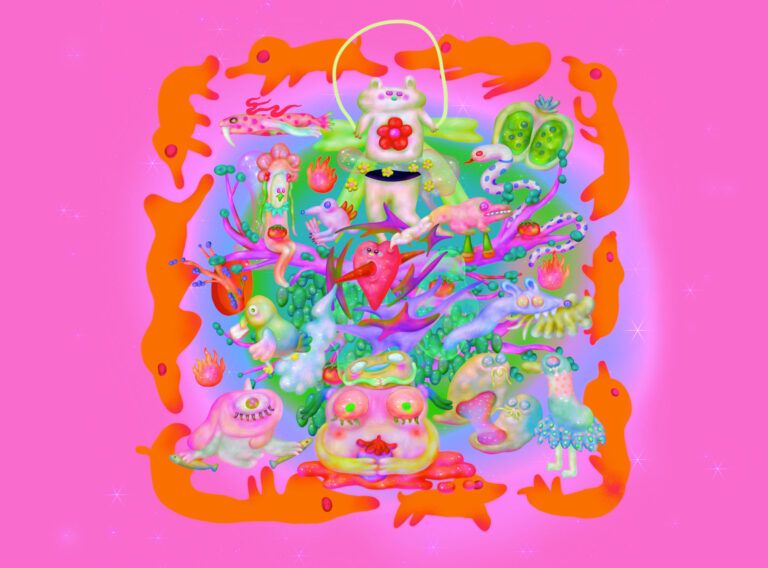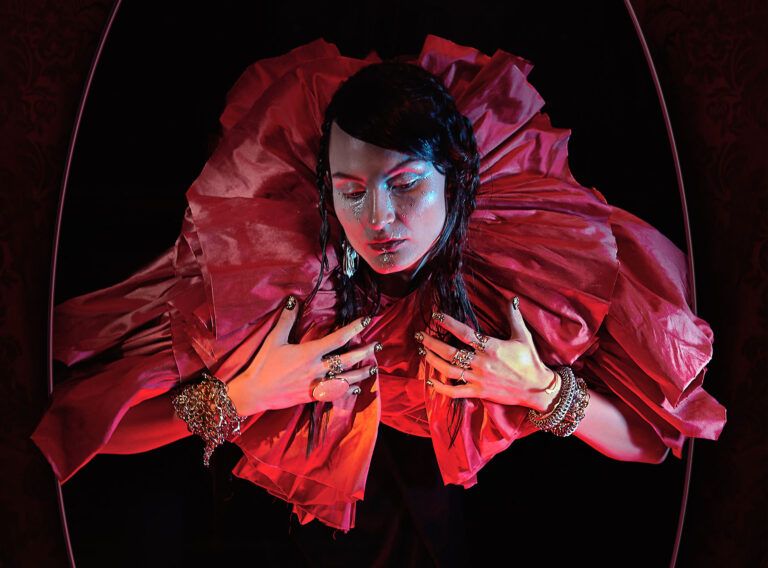Liminal spaces: Terra Incognita
We always wanted a place to hide. To inhabit islands with their own rules, where we can die and be reborn. In her reflection, Bára Čápová looks for parallels between Deleuze’s concept of utopian islands and today’s visual trend of liminal spaces. The text is illustrated by Andrea Sklepek Šafaříková.
The desert islands are empty. At first glance, no one lives on them, so we may appropriate them. Starting from scratch, we find ourselves at the very beginning. Nothing we’ve ever been is valid anymore. We are free. There are eerie sounds in the night and we begin to suspect that we are not alone. But freedom and curiosity are stronger than fear. And so we visit the islands again and again – exploring by day and undergoing a ritual transformation by night. We cross the threshold to the next mental level.
But our living conditions and habits are changing, and so are the places that allow us to perform these rituals. From the idea of a tiny speck of sand in the middle of an endless body of water, we are slowly moving into the equally uncharted waters between the physical and virtual interfaces. We are entering the edge of liminality.
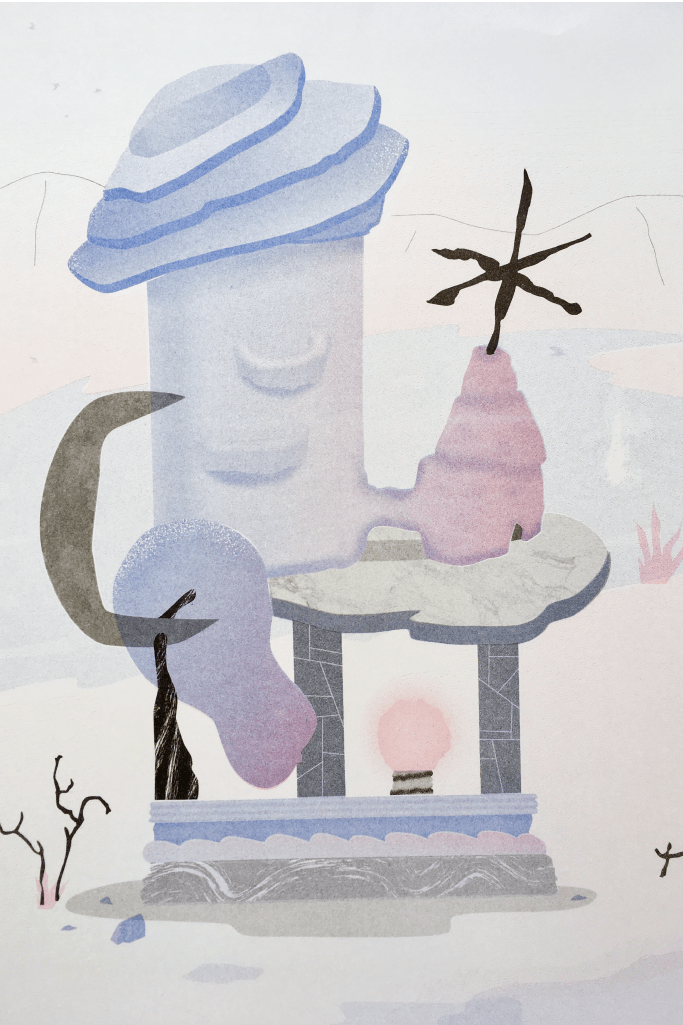
HERE ARE LIONS
Although the French anthropologist Arnold Gennep coined the concept of liminality as early as 1904, it rarely penetrated everyday life until the outbreak of Covid. The tables turned when restrictions emptied the otherwise crowded streets of cities and most people’s living space was reduced to a few rooms of their apartments. One of the few fantastic adventures took place on displays and monitors, where similarly inappropriately emptied spaces of places we knew well from their “crowded times” before the pandemic increasingly appeared. Previously normally inhabited urban landscapes were temporarily transformed into non-landscapes, and the frames of our displays filled them with impenetrability, mystique and tension. Images of abandoned parking lots, airport concourses, waiting rooms and hotel lobbies replaced the unexplored territories on the maps of ancient explorers.
Liminal spaces became one of the most searched images on the internet during the pandemic years. But the uncertainties they brought us were different from what we experienced in the real world. In fact, upon entering the confined liminal spaces, the debilitating existential fears were replaced by a mobilizing fascination that kept us constantly on our toes and gave us the space for our own mental rites of passage that we really needed to perform at the time.
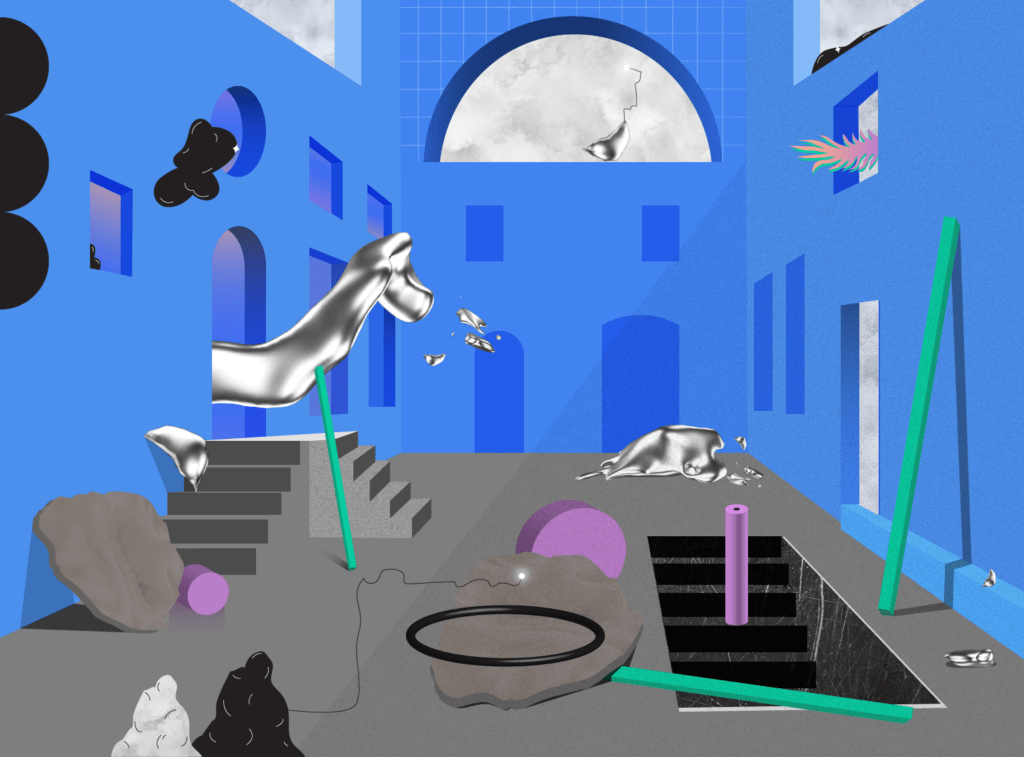
DRAINING REALITY
Liminality is a certain threshold between two levels and waiting rooms, parking lots or airport concourses its visual representation. But the mysterious images of liminal spaces emerging from the displays of our devices represent one particular threshold on which we are currently teetering – the threshold between the physical and the virtual interfaces. Although when we look at the images of liminal spaces, we assume that they are photographs of real places, something about them is off. the bare walls, the tiled floors and the endlessly running corridors reminiscent of the first 3D renderings of computer games or a trashy version of dreamscapes leave us in doubt as to what world the scenes come from. We can’t distinguish whether the image is real or artificial, and thinking about this dichotomy gradually ceases to make sense. Authenticity becomes the only relevant measure of realness.
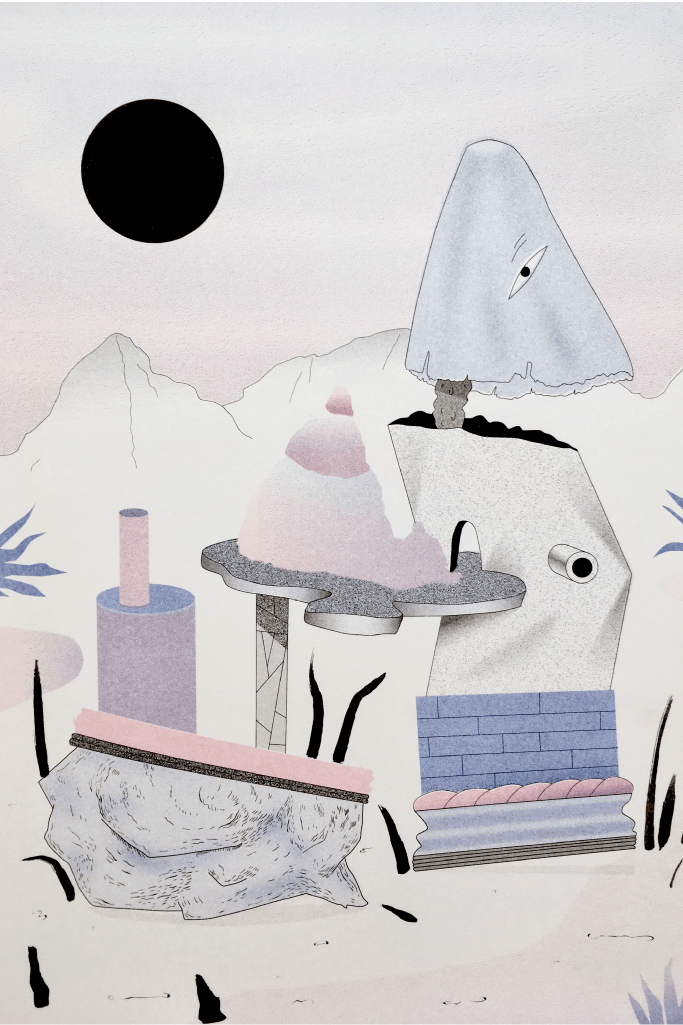
SPACES DETERMINING THE CONTENT
At the boundary between physical and virtual space, it is irrelevant whether it is a photograph of a real place or its 3D imitation; the question of why the space is empty –whether some unexpected event has happened there, or whether it has looked like this from the very beginning. Either way, we feel the inappropriateness that comes from potential abandonment. We assume from experience that something terrible must have happened, but the spaces are completely neutral and there is no hint of good or evil to be found. All that remains is the compulsive feeling that something is different. We need such ambivalence in rites of passage – it gives us the opportunity to choose who we want to become. And so the black-and-white perception of good and evil has been replaced by a balancing act between these two poles. Whether we’re talking about Black Mirror, Joker, or Liminal Spaces, this dichotomy surrounds us. The constant re-evaluation of the meaning of good and evil gives us the freedom to make our own choices.
Liminal Spaces have become our new, temporarily habitable utopian islands. Places from which we flee in terror, only to return to them soon with curiosity. The simulators of life situations for which we must constantly prepare.
